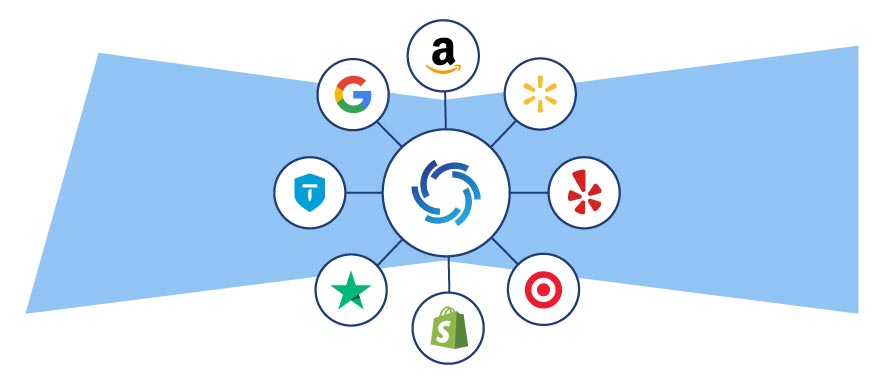The hard truth: If you're only collecting Google reviews, you're leaving money on the table. Your customers don't all use Google to research. Some check Facebook. Some trust Yelp. Some go straight to industry-specific sites. You need to be everywhere they're looking.
The Google-Only Trap
Most businesses focus exclusively on Google reviews. It makes sense—Google is the biggest player. But here's what you're missing:
Gen Z checks TikTok. Millennials trust Yelp. Baby Boomers rely on Facebook. You're invisible to customers who don't search Google.
Contractors need Angi and HomeAdvisor. Restaurants need OpenTable and TripAdvisor. Healthcare needs Healthgrades. These platforms drive bookings directly.
Someone might find you on Google but check your Facebook page before calling. No reviews there? Red flag.
Your competitors have 200 Google reviews, 150 Facebook reviews, 80 Yelp reviews. You have 200 Google reviews and nothing else. Who looks more established?
Where Your Customers Actually Look for Reviews
Customer research behavior varies by industry, demographic, and purchase decision. Here's where people actually look:
Universal Platforms (Every Business Needs):
Google Business Profile
Why it matters: Shows up in local search and Maps. Influences local SEO rankings. Most customers start here.
Priority level: Critical - Must have strong presence
Why it matters: Second-largest review platform. Many customers check Facebook pages even if they found you on Google. Strong social trust factor.
Priority level: High - Important secondary platform
Yelp
Why it matters: Strong for restaurants, retail, and services. High-intent users (they're actively looking). Tough review guidelines = high trust.
Priority level: Medium-High - Depends on industry
Industry-Specific Platforms:
Angi (formerly Angie's List), HomeAdvisor, Thumbtack, Houzz, Porch
TripAdvisor, OpenTable, Zomato, DoorDash, Uber Eats
Healthgrades, Vitals, ZocDoc, RateMDs, WebMD
Healthgrades, Zocdoc, Yelp, Google
TripAdvisor, Booking.com, Hotels.com, Expedia
RepairPal, CarGurus (for dealerships), Yelp
Avvo (legal), LinkedIn, Better Business Bureau
StyleSeat, Vagaro, Booksy, ClassPass
Building Your Multi-Platform Strategy
You can't be everywhere at once. Here's how to prioritize and execute:
Start With Your Core Three
Don't spread yourself too thin. Master these three first:
Get to at least 50+ reviews before expanding. This is your foundation.
Why: Affects local search rankings. Most customers start here. Hardest to fake.
Build to 25-50 reviews. Many customers cross-check here.
Why: Social proof. Customers already on Facebook. Easy to share and engage.
Focus on the ONE platform most important to your industry.
Why: These drive direct bookings. High-intent customers use them.
Get strong on these three before adding more platforms. 50 reviews on 3 platforms beats 10 reviews on 10 platforms.
Let Customers Choose Multiple Platforms
The best approach? Give customers access to all your platforms at once. Let them choose where they're most comfortable leaving a review.
How ReviewStream's Multi-Platform Routing Works:
When a customer clicks your review link, they see a clean landing page with all your review platforms displayed as buttons:
"We'd love your feedback!"
🔍 Yelp
🏠 Angi
Why This Works Better:
Some people prefer Google. Others trust Yelp more. Some live on Facebook. Let them choose where they're comfortable.
Every customer has the opportunity to leave a review on any (or all) of your platforms. You don't miss anyone.
Reviews naturally distribute across platforms based on real customer preferences, not arbitrary rotation rules.
Highly satisfied customers sometimes leave reviews on 2-3 platforms. You'd miss this if you only sent them to one.
Set up all your platforms once in ReviewStream. Every review request automatically includes all of them. Your customers pick, and you get reviews everywhere that matters.
Keep Your Landing Page Simple and Clean
When showing multiple platform options, design matters. Make it obvious, simple, and fast.
❌ Cluttered Approach:
Landing page showing:
- • Small text links
- • Mixed with other content
- • Unclear buttons
- • Long explanations
- • Distracting elements
Result: Customer can't figure out where to click
✅ Clean Approach:
ReviewStream's landing page:
- • Large, clear buttons
- • One purpose only
- • Platform logos visible
- • Short, friendly message
- • Mobile-optimized
Result: Customer picks their platform and clicks
Best Practices for Multi-Platform Pages:
ReviewStream's landing pages are designed for maximum conversion. Clean, fast-loading, mobile-first, and optimized through thousands of review requests. Your customers see a professional page that makes leaving a review effortless.
Maintain Consistent Messaging
Your review request should feel the same regardless of which platform you're sending them to.
What Stays the Same:
What Changes (Slightly):
Google: “...we'd love to hear about your experience on Google!”
Facebook: “...we'd love your feedback on Facebook!”
Yelp: “...would you mind leaving us a quick Yelp review?”
Common Multi-Platform Mistakes to Avoid
Trying to build 8 platforms at once. Result: 5 reviews on each, nothing looks impressive.
Fix: Master 3 platforms before adding more.
Each platform has different guidelines. Yelp is strictest. Google doesn't allow review gating.
Fix: Learn each platform's terms. Stay compliant.
Responding to Google reviews but ignoring Facebook and Yelp.
Fix: Set up alerts for all platforms. Respond everywhere within 24 hours.
“Please review us on Google, Yelp, AND Facebook!”
Fix: One customer, one platform, one request.
Why Multi-Platform Reviews Drive More Business
Show up wherever customers are searching. Google, Facebook, Yelp, industry sites—you're there.
Customers cross-reference. If you have great reviews everywhere, you look legitimate and established.
If one platform changes its algorithm or policies, you're not completely dependent on it.
Most competitors are Google-only. You look more established and professional.
When customers see consistent great reviews across multiple platforms, they convert at higher rates.
The Bottom Line
Google reviews are essential. But they're not enough.
Your customers are everywhere. Your reviews should be too. Not on every platform—that's unrealistic. But on the 3-5 platforms that matter most to your industry and your customers.
Start with Google. Build it strong. Then expand to Facebook and your top industry platform. Use smart routing to distribute reviews automatically. Make it invisible to customers—they just click and review.
Be everywhere your customers are looking.
Multi-platform reviews aren't just nice to have in 2025. They're essential for staying competitive and converting more of the customers who find you.

